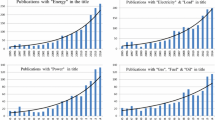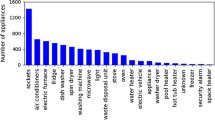Abstract
Demand-side response (DSR) measures, which facilitate the management of system reliability and maintain system resource adequacy of power grids, are gaining prominence. Traditional optimization methods for residential electricity usage in peak-demand hours often lack flexibility and effectiveness in solving practical problems due to a large amount of data and a high degree of data uncertainty. Our study aims to obtain a high degree of responsiveness for numerous and highly dispersed residential customers by integrating data-driven and model-driven methods. In this study, we conducted large-scale DSR controlled trials, collected 15-min intervals of electricity consumption data, and matched the survey data. A dynamic time-warping clustering-based difference-in-difference method was proposed for empirical analysis. The results indicate that monetary incentives induced a statistically significant reduction in electricity usage during peak periods in summer by 18.6%, while the response effect was not significant in winter. The heterogeneity analysis suggests that the reduction was mainly contributed by the middle-income group and the elderly group. Our study provides a basis for policymakers to formulate tailored policies to optimize residents’ electricity consumption during peak hours.





Similar content being viewed by others
References
Agnetis, A., De Pascale, G., Detti, P., et al. (2013). Load scheduling for household energy consumption optimization. IEEE Transactions on Smart Grid, 4(4), 2364–2373.
Alaqeel, T.A., Suryanarayanan, S. (2019). A comprehensive cost-benefit analysis of the penetration of Smart Grid technologies in the Saudi Arabian electricity infrastructure. Utilities Policy 60, 100–933.
Alberini A, Gans W, Velez-Lopez D. (2011). Residential consumption of gas and electricity in the US: The role of prices and income. Energy Economics, 33(5), 870–881.
Alvarez-Miranda E., Salgado-Rojas, J. et al. (2020). An integer programming method for the design of multi-criteria multi-action conservation plans. Omega, 92, 102147.
Amina, M., Kodogiannis, V. S., Petrounias, I., et al. (2012). A hybrid intelligent approach for the prediction of electricity consumption. International Journal of Electrical Power & Energy Systems, 43(1), 99–108.
Bartusch, C., & Alvehag, K. (2014). Further exploring the potential of residential demand response programs in electricity distribution. Applied Energy, 125, 39–59.
Behl, M., Smarra, F., & Mangharam, R. (2016). DR-Advisor: A data-driven demand response recommender system. Applied Energy, 170, 30–46.
Cayla, J. M., Maizi, N., & Marchand, C. (2011). The role of income in energy consumption behaviour: Evidence from French households data. Energy Policy, 39(12), 7874–7883.
Chen, C., Wang, J., & Kishore, S. (2014). A Distributed Direct Load Control Approach for Large-Scale Residential Demand Response. Power Systems IEEE Transactions on, 29(5), 2219–2228.
Chen, Y., Xu, P., Chu, Y., et al. (2017). Short-term electrical load forecasting using the Support Vector Regression (SVR) model to calculate the demand response baseline for office buildings [J]. Applied Energy, 195, 659–670.
Dong, J., Xue, G., & Li, R. (2016). Demand response in China: Regulations, pilot projects and recommendations – A review. Renewable and Sustainable Energy Reviews, 59, 13–27.
Fotouhi Ghazvini, M. A., Faria, P., Ramos, S., et al. (2015). Incentive-based demand response programs designed by asset-light retail electricity providers for the day-ahead market. Energy, 82, 786–799.
Gary, L., Amos, H. C., & Ng, T. A. (2020). A hybrid simulation-based optimization framework supporting strategic maintenance development to improve production performance. European Journal of Operational Research, 281(2), 402–414.
Gillard R., Snell C., & Bevan M. (2017). Advancing an energy justice perspective of fuel poverty: Household vulnerability and domestic retrofit policy in the United Kingdom. Energy Research and Social Science, pp. 53–61.
Godin, C., & Lockwood, P. (1989). Dtw schemes for continuous speech recognition: A unified view. Computer Speech and Language, 3(2), 169–198.
He, Y., Wang, B., Wang, J., et al. (2012). Residential demand response behavior analysis based on Monte Carlo simulation: The case of Yinchuan in China. Energy, 47(1), 230–236.
Hu, M., & Xiao, F. (2018). Price-responsive model-based optimal demand response control of inverter air conditioners using genetic algorithm. Applied Energy, 219, 151–164.
Ito, K. (2014). Do consumers respond to marginal or average price? Evidence from nonlinear electricity pricing. American Economic Review, 104(2), 537–563.
Kavaklioglu, K. (2011). Modeling and prediction of turkey’s electricity consumption using support vector regression. Applied Energy, 88(1), 368–375.
Klaassen, E. A. M., Kobus, C. B. A., Frunt, J., et al. (2016). Responsiveness of residential electricity demand to dynamic tariffs: Experiences from a large field test in the Netherlands. Applied Energy, 183, 1065–1074.
Li, Y., Pizer, W. A., & Wu, L. (2019). Climate change and residential electricity consumption in the Yangtze River Delta, China. Proceedings of the National Academy of Sciences, 116(2), 472–477.
Mahmoudimehr, J., & Sebghati, P. (2019). A novel multi-objective dynamic programming optimization method: performance management of a solar thermal power plant as a case study. Energy, 168, 796–814.
Muratori, M., & Rizzoni, G. (2015). Residential demand response: Dynamic energy management and time-varying electricity pricing. IEEE Transactions on Power Systems, 31(2), 1108–1117.
Nan, S., Zhou, M., & Li, G. (2017). Optimal residential community demand response scheduling in smart grid. Applied Energy, 210, 1280–1289.
Nwulu, N. I., & Xia, X. (2015). Multi-objective dynamic economic emission dispatch of electric power generation integrated with game theory based demand response programs. Energy Conversion and Management, 89, 963–974.
Qian, L. P., Zhang, Y. J. A., Huang, J., et al. (2013). Demand response management via real-time electricity price control in smart grids. IEEE Journal on Selected Areas in Communications, 31(7), 1268–1280.
Rotger-Griful, S., Jacobsen, R. H., Nguyen, D., et al. (2016). Demand response potential of ventilation systems in residential buildings. Energy and Buildings, 121, 1–10.
Soares, A., Gomes, A., Antunes, C. H. (2014). Categorization of residential electricity consumption as a basis for the assessment of the impacts of demand response actions. Renewable and Sustainable Energy Reviews, 30, 490–503
Srinivasan, D., Rajgarhia, S., Radhakrishnan, B. M., Sharma, A., & Khincha, H. P. (2017). Game-Theory based dynamic pricing strategies for demand side management in smart grids. Energy, 126, 132–143.
Tang, R., Wang, S., & Li, H. (2019). Game theory based interactive demand side management responding to dynamic pricing in price-based demand response of smart grids. Applied Energy, 250, 118–130.
Tong, C., Li, J., Lang, C., Kong, F., Niu, J., & Rodrigues, J. J. P. C. (2018). An efficient deep model for day-ahead electricity load forecasting with stacked denoising auto-encoders. Journal of Parallel and Distributed Computing, 117, 267–273.
Tran, N. H., Oo, T. Z., Ren, S., Han, Z., Huh, E. N., & Hong, C. S. (2016). Reward-to-reduce: An incentive mechanism for economic demand response of colocation datacenters. IEEE Journal on Selected Areas in Communications, 34(12), 3941–3953.
Wang, Y., & Li, L. (2013). Time-of-use based electricity demand response for sustainable manufacturing systems. Energy, 63, 233–244.
Wang, Y., Ai, X., Tan, Z., Yan, L., & Liu, S. (2015). Interactive dispatch modes and bidding strategy of multiple virtual power plants based on demand response and game theory[J]. IEEE Transactions on Smart Grid, 7(1), 510–519.
Wang. Z., Zhao. W., Deng. N., Zhang. B.,Wang. B. (2020). Mixed data-driven decision-making in demand response management: An empirical evidence from dynamic time-warping based nonparametric-matching DID. Omega, p. 102233.
White, L. V., & Sintov, N. D. (2020). Health and financial impacts of demand-side response measures differ across sociodemographic groups. Nature Energy, 5(1), 50–60.
Woellmer, M., Al-Hames, M., Eyben, F., Schuller, B., & Rigoll, G. (2009). A multidimensional dynamic time warping algorithm for efficient multimodal fusion of asynchronous data streams. Neurocomputing, 73(1–3), 366–380.
Xiang, Y., Cai, H. H., Gu, C. H., & Shen, X. D. (2020). Cost-benefit analysis of integrated energy system planning considering demand response. Energy, 192, 116632.
Yang, Q., & Fang, X. (2017). Demand response under real-time pricing for domestic households with renewable DGs and storage. Generation, Transmission and Distribution, IET, 2017, 11(8), 1910–1918.
Yazar, A., & Arslan, H. (2018). A flexibility metric and optimization methods for mixed numerologies in 5G and beyond. IEEE Access, pp. 1–1.
Yu, M., & Hong, S. H. (2017). Incentive-based demand response considering hierarchical electricity market: A Stackelberg game approach. Applied Energy, 203, 267–279.
Zhang, H., Wu, K., Qiu, Y., Chan, G., Wang, S., Zhou, D., & Ren, X. (2020). Solar photovoltaic interventions have reduced rural poverty in China. Nature Communications, 11(1), 1–10.
Zhang, Z., Tavenard, R., Bailly, A., Tang, X., Tang, P., & Corpetti, T. (2017). Dynamic time warping under limited warping path length. Information Sciences, 393, 91–107.
Nunn, N., & Qian, N. (2011). The potato’s contribution to population and urbanization: evidence from a historical experiment. The Quarterly Journal of Economics, 126(2), 593–650.
Ratnasiri, S., Wilson, C., Athukorala, W., Garcia-Valiñas, M. A., Torgler, B., & Gifford, R. (2018). Effectiveness of two pricing structures on urban water use and conservation: a quasi-experimental investigation. Environmental Economics and Policy Studies, 20(3), 1–14.
Jordehi, A. R. (2019). Optimisation of demand response in electric power systems, a review. Renewable and Sustainable Energy Reviews, 103, 308–319.
Ito, K., Ida, T., & Tanaka, M. (2018). Moral suasion and economic incentives: field experimental evidence from energy demand. American Economic Journal: Economic Policy, 10(1), 240–267.
Wolak, F. A. (2011). Do residential customers respond to hourly prices? evidence from a dynamic pricing experiment. The American Rconomic Review, 101(3), 83–87.
Yang, J., & Gao, M. (2018). The impact of education expansion on wage inequality. Applied Economics, 50(12), 1309–1323.
Acknowledgements
This study is supported by the Yunnan Provincial Major Science and Technology Special Plan Project(Reference No. 202002AD080001), National Science Fund for Distinguished Young Scholars (Reference No. 71625003), National Key Research and Development Program of China (Reference No. 2016YFA0602504), National Natural Science Foundation of China (Reference NoS. 91746208, 71573016, 71403021, 71521002, 71774014, 71804010), Science and Technology Project of State Grid Jiangxi Electric Power Co., Ltd. (Reference No. 521852200068).
Author information
Authors and Affiliations
Corresponding author
Additional information
Publisher's Note
Springer Nature remains neutral with regard to jurisdictional claims in published maps and institutional affiliations.
Rights and permissions
About this article
Cite this article
wang, B., Deng, N., Zhao, W. et al. Residential power demand side management optimization based on fine-grained mixed frequency data. Ann Oper Res 316, 603–622 (2022). https://doi.org/10.1007/s10479-021-04119-8
Accepted:
Published:
Issue Date:
DOI: https://doi.org/10.1007/s10479-021-04119-8




